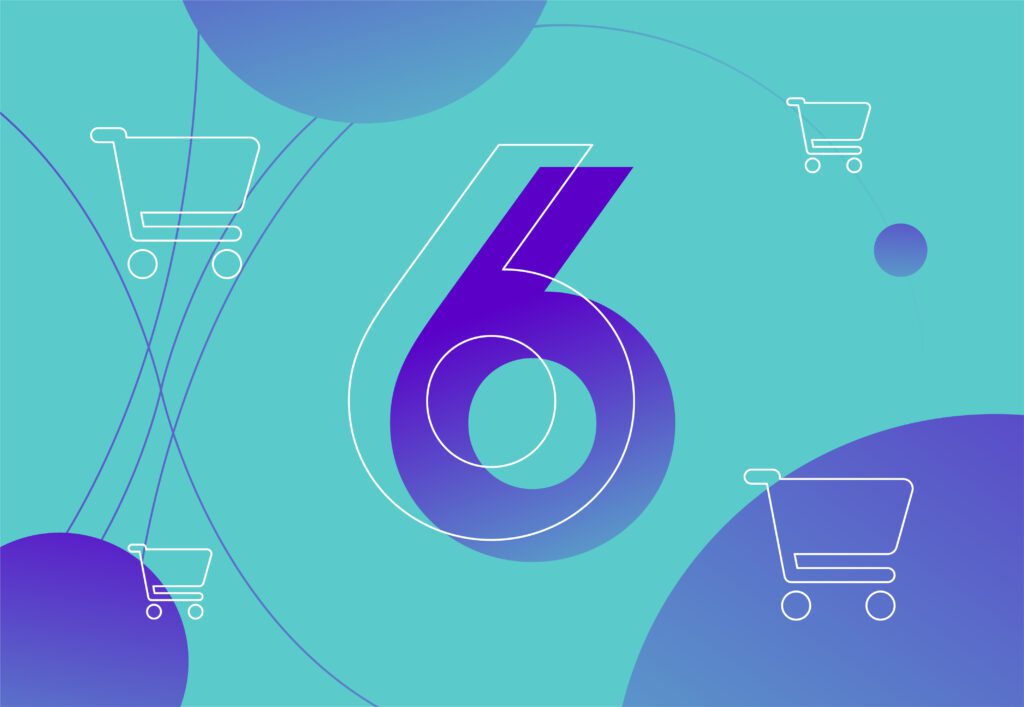
Six reasons for cart abandonment and how to reduce it

You could potentially be missing out on an easy hack in your marketing strategy! Are cart abandonments currently in your BOF strategy? We’ll explain everything you need to know about it, what it is, why people don’t complete their order, how to reduce it and best practices.
An e-commerce client came to us with a very limited marketing funnel. It was predominantly TOF on Meta with a simple 90-day website views campaign (BOF). Immediately, we noticed that there were a lot of add-to-carts, however, the disconnect was with the conversion from ATC to purchase. We immediately did a deep dive into the customer buying journey and highlighted multiple limitations; long loading times, too many steps to check out, website optimisations, etc…
If cart abandonment is concerning you at the moment, Embryo specialises in this field, as they’ve recently just won a national paid social award. Read this blog to find out ways to reduce cart abandonment.
What is cart abandonment?
Before we start to spiel about cart abandonment, let’s clarify what it is. Cart abandonment refers to when online users add items to their virtual shopping carts but leave the website before completing the purchase. This represents lost sales and can be attributed to various factors that hinder the seamless progression from browsing to purchase. To be exact, it’s predicted that the UK market suffer from losing over £14.3 billion in sales every year! There could be a million and one reasons why people abandon their online baskets. Let’s dig deeper into the reasons why.
Why do people abandon their baskets?
Understanding the customer behaviour behind cart abandonment is crucial. Here are six common reasons why customers abandon their shopping carts:
- Unexpected Costs: Personally, this is the main reason why I abandoned my basket. When you get to the checkout process you see high postage and packaging fees or other unexpected charges. This is why every business should be super transparent to their customers and this really frustrates me.
- Complex Checkout Process: A customer’s buying Journey should be extremely simple and as quick as possible. We all love companies like Amazon which have the checkout in one button step (my bank account may not like it though). The longer the buyer journey, the more it can deter customers from completing their purchase. Simplifying and streamlining the process can significantly reduce abandonment rates.
- Concerns About Security: While cyber threats and data breaches are becoming more and more popular, customers are cautious about sharing sensitive information online. So with start-up companies with no brand recognition or credibility, this can be a struggle as users would prefer to buy from established companies such as John Lewis, Next, The Range etc. That’s why putting in additional steps such as displaying trust signals like SSL certificates, secure payment options and a good organic social can help build trust and build engagement with your users.
- Affordability: A customer might like your product at the awareness stage, however, when they go further down the funnel, they may hit a stumbling block when it comes to price!
- Creating Accounts at Checkout: Requiring customers to create an account before checkout can be a deterrent as you’re creating additional steps on the buyer journey. You should provide a guest checkout option to streamline the process for first-time shoppers.
- Site Delays: Website analytics such as slow loading times, or website glitches can disrupt the purchasing journey and prompt customers to abandon their carts out of frustration.
Marketing techniques to improve abandonment rate
Now that we’ve identified 6 reasons why users may abandon their basket, let’s look into methods/steps which you can implement to reduce abandonment rates and enhance conversion opportunities:
- Transparent Pricing: You need to be super transparent when it comes to costs, you need to be clearer than water! Offer incentives such as free shipping or discounts for first-time buyers.
- Optimise Checkout: Simplify the customer journey by reducing the number of steps to complete a purchase. Including features such as auto-fill functionalities will help to increase successful conversions.
- Payment Flexibility: Accept multiple payment methods, the more the better! Offering a variety of payment options, including credit/debit cards, digital wallets, and Buy Now, Pay Later services helps to increase your potential reach. Especially if your product has a high AOV (average order value), this will allow them to split the cost over multiple payments which will be attractive to customers who have a lower disposable income.
- Enable Guest Checkout: Allow users to purchase via guest accounts so they can complete their purchases as quickly as possible.
- Enhance Website Performance: Invest in website optimisations to increase website speed and usability. Statistics show that if a user waits more than 3 seconds for a page to load, up to 50% of users will go off that page which is a huge chunk of your users!
- Offer discounts/incentives: Offering additional discounts at checkout will make the product cheaper, and persuade the customers to check out.
Once you’ve sorted out the website optimisations and customer buyer journey stumbling blocks. Paid ads are a great way to re-engage with these types of customers.
Cart recovery emails:
- Automated emails: Sending personalised emails to remind customers about their abandoned carts and incentivise them to complete their purchases can be very effective. Especially when you follow up with discount codes.
- Subject Line Hooks: You need to stand out as users receive hundreds of emails a day, they need to be attention-grabbing subject lines. You can use dynamic content to display the abandoned items and highlight any limited-time offers or promotions.
- Personalised Products: Using AI, you can now send tailored products based on the customer’s browsing history and abandoned items. This makes it personal and makes it more familiar.
- Exclusive Discounts or Offers: Include exclusive discounts or special offers such as ‘VIP discount’ in cart recovery emails. Create a sense of urgency to prompt immediate action by saying that the offer ends at midnight.
- Clear Call-to-Action (CTA): Place a clear CTA button that directs recipients back to their carts.
Paid Social ads:
- Retargeting Campaigns: Launch retargeting campaigns across various platforms (e.g., Facebook and Instagram) to re-engage users who have abandoned their carts. You can do this by taking advantage of the meta pixel.
- Dynamic Product Ads (DPAs): Utilise dynamic product ads to automatically showcase the exact products that were abandoned in the shopping cart. DPAs are highly effective for driving conversions.
- A/B Testing: Continuously optimise ad creatives, messaging, and targeting through A/B testing. Experiment with different ad formats, visuals, and copy to identify the most effective combinations for recovering abandoned carts. Sometimes simple text just like ‘don’t forget, complete your basket’.
- Frequency Caps: If your audience is small, your audience will become saturated very quickly. So setting frequency caps is a great way to make sure that you’re not spamming users, and it’s the most cost-effective as it could lead to ad fatigue very quickly.
- Lookalike Audiences: If your audience is small, you can create LAL audiences within Meta based on the abandoned baskets.
By taking advantage of cart recovery emails and paid ads in your overall marketing strategy, you can generate sales at a much cheaper cost as your audience is already warm as it’s at the BOF. Using the tactics above will help you engage and strategically reach your customers.
If you need help with cart abandonment, Embryo’s award-winning paid social team are experts in this field. Get in touch with our team today at 0161 327 2635 or via email at [email protected].




